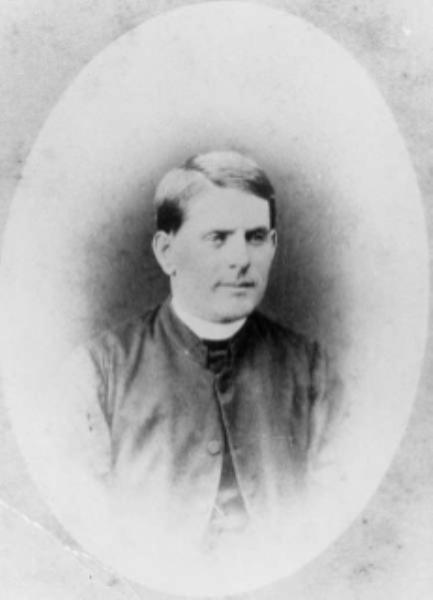Stanthorpe-based ROBERT MACMAURICE has a keen eye for local history and research skills to match and he has agreed to share the fruits of his labour with Southern Free Times readers with occasional contributions, beginning with this piece on pioneering priest Father Jerome Davadi.
FATHER Jerome Davadi was born in 1846 at Monte Carotta, Ancona, Italy.
He was the son of Pietro and Elizabeth Davadi and studied for the priesthood at the University of Rome, which was called the Sapienza. He and two other priests were recruited to come to Australia directly from the university by the Bishop of Brisbane, the Rev James Quinn and they arrived in Brisbane on 28 February 1871 aboard the ship, Storm King.
Father Scortechini was initially sent to Warwick and Father Davadi replaced him there in June 1873.
Subsequently Father Davadi was appointed to Stanthorpe in 1874. The Church had been in operation since December 1872 in this new township.
It is significant to note that one of the priests that came to Australia with Father Davadi was Benedetto Scortechini. Father Scortechini graduated not only as a priest but as a lawyer, and at the time of his death in 1886, while on leave from the Church on a scientific expedition in Malaya, had an international reputation in botany. Three plants of the Granite Belt are named after Father Scortechini, because he discovered and classified them.
I highlight this, because I do not know what Father Davadi’s specialised studies were, but like his friend and fellow student and fellow priest the very classical curricula studied at the University of Rome also includes botanical studies.
Father Davadi had four properties under cultivation with grapes and other fruits and vegetables.
These properties were the horse yard at the presbytery, a property at Mount Marlay, another at The Caves, as well as a paddock next to the Sugarloaf Church.
Father Davadi’s interests also extended to being appointed to the Acclimatisation Committee in 1896, where it was decided to explore the introduction of trout and feathered game into the district as a food source.
When he travelled overseas in 1888, he travelled not only to Italy and Ireland, but also to Cornwall to study tin mining methods there.
He was a man not only interested in his theological vocation, but clearly driven and interested in a wide range of matters affecting the community that he lived in.
He wasn’t the first orchardist in the district, but he was among the first of a small band interested in this field.
Importantly, he was in a unique position of advocacy, and a community leader, who gave power to the notion of fruit and vegetable production in the district.
Father Davadi also appears to be the first to exhibit wine at the Stanthorpe Show and there are subsequent references of others following in this pursuit, as a result of his encouragement.
He is also reported as being an experienced vigneron. It might be surmised that this activity had a practical connection with some of the ceremonies of the Church service, but it might additionally be concluded that the drinking of wine with meals was, and is, a very European custom.
Australian cultural practices did not embrace this custom very well until many, many years later.
Father Davadi was a man of learning and culture. The evidence shows that he inspired others in vegetable and fruit and wine making production. The conferring of a title such as “Father of” or “Pioneer of” is usually a “custom and practice” arrangement. There is not one great arbiter for such titles. There are other significant personalities in the story of the fruit and wine industry of this area, and they played a part, in later times.
Contemporary to Father Davadi, in the Warwick area are a number of other very significant wine makers and agriculturists, including, Jacob Kircher, David Mauch, William Spreadborough, Conrad Roemer, Frederick Reimer, and others. They developed a significant national as well as international interest in the wine production of this region, at that time.
Father Davadi died on 22 January 1900 at the age of 53 years and willed all his properties to the Church.
In 1978 the Stanthorpe Shire Council placed a plaque and monument in front of St Joseph’s Church. The plaque refers to Father Davadi as a “Pioneer of the Fruit Industry in Stanthorpe”.
Father Jerome Davadi is undoubtedly a very significant figure in the history of this area in relation to the wine and fruit industry.







